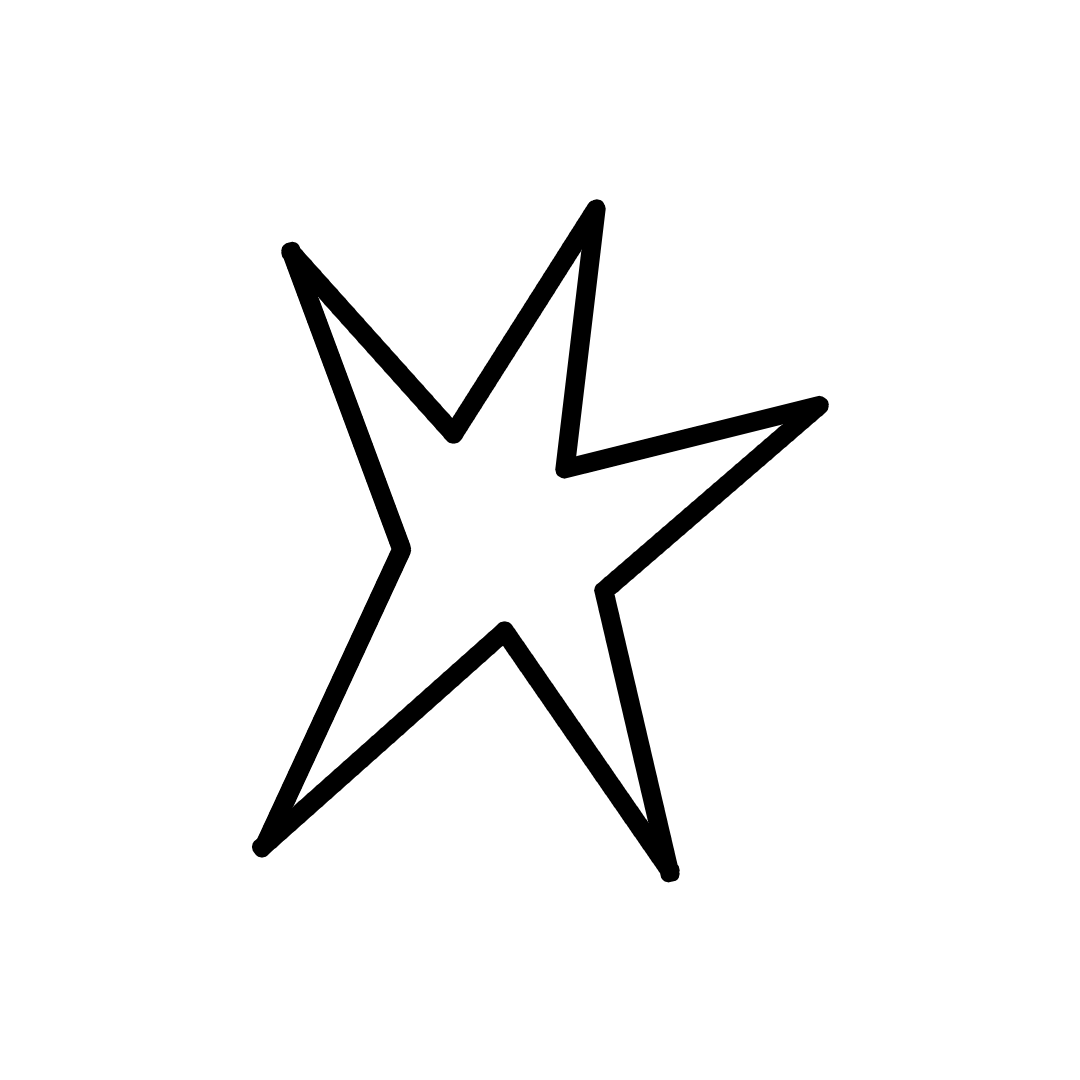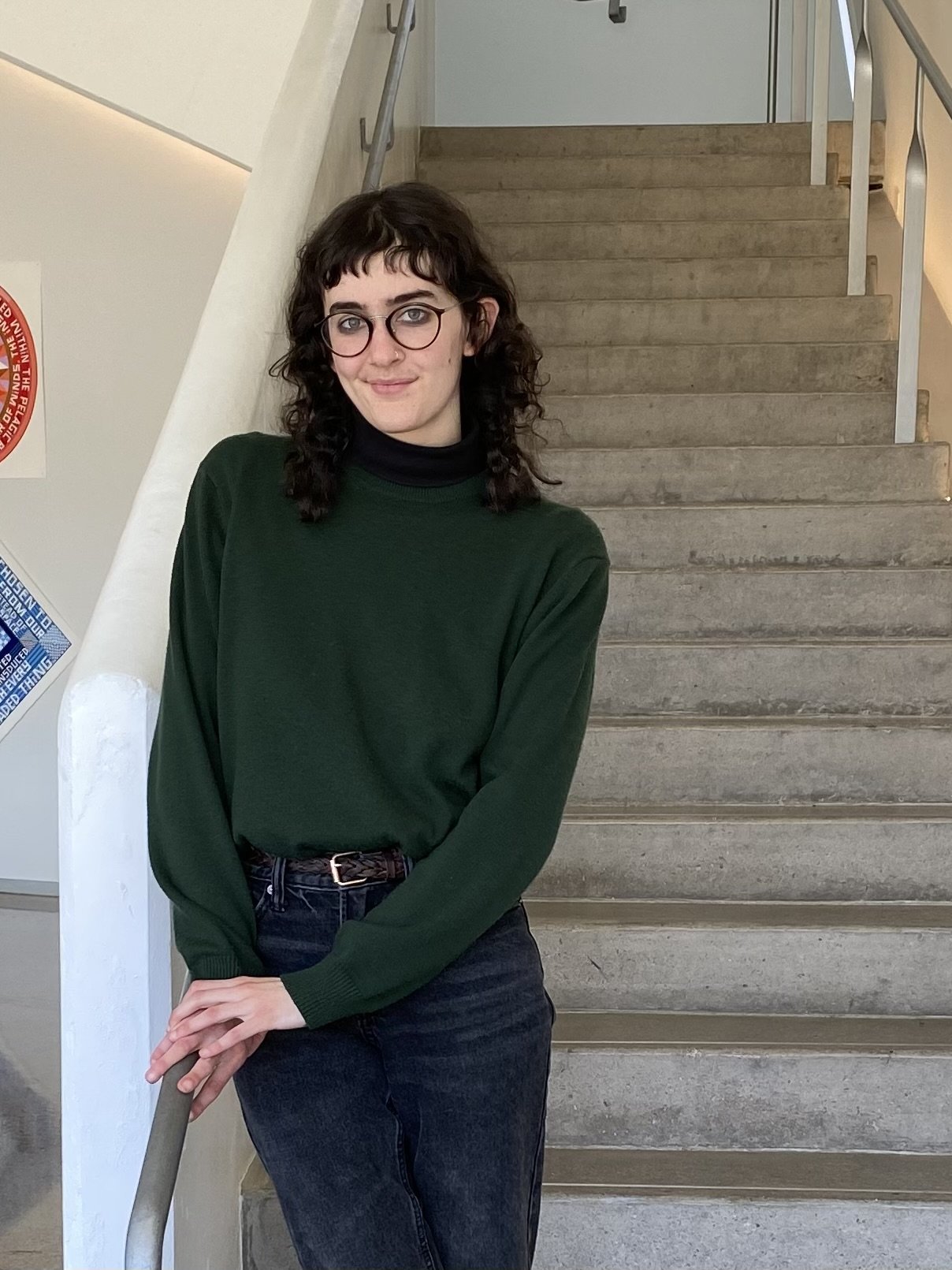Nads Neman
Nads Neman (b. 1997 in Norfolk, VA) is an artist and writer based in New York City. Their work explores historical sites as a reflection of overlapping cultures and archaeologies, labor, decay, and chronological ambiguity. Their poetry centers around note taking and how it deconstructs and reconstructs memory in history.
Nads is the writer of 5 Tubs of Gesso on Substack. They wrote exhibition text for Because of Conflict: Photographs by Peter Turnley at the Harnett Museum of Art.
Nads earned their BA in History, English and French from the University of Richmond in 2020,
Preoccupied with Matter and Transforming
by Nads Neman
4/15/2023
When I scroll through the digital gallery that houses FRC16, I think about Lawrence Weiner’s 2002 installation at Glenstone in Potomac, Maryland, “MATTER SO SHAKEN TO ITS CORE TO LEAD TO A CHANGE IN INHERENT FORM TO THE EXTENT OF BRINGING ABOUT A CHANGE IN THE DESTINY OF THE MATERIAL. PRIMARY SECONDARY TERTIARY.” The works in this show—which itself transforms the traditional material exhibition structure into the digital realm—shake their matter to its core, itching to transform material and transcend form.
In each of these works, I can’t help but sense a flightiness, a pliability of form. Weiner’s piece seems to ask how and when matter shifts, and the pieces in FRC16 beg the same question. When artists transform materials, they change what those materials do. These materials perform a physical purpose, but through becoming artworks, they also serve a unified material and conceptual destiny. So, if you’ll humor me, I’m going to take a bit of a tactile approach to these pieces. I’m going to focus how they are made and what they are made of–and how they transform matter to change their destiny as artworks.
Amy Yoshitsu’s “A House” plays heavily on its material transformation. Composed with paper and thread, its title insists on it being anything but. I imagine Yoshitsu creating this work, transforming its literal material to a new, metonymic form.
Yoshitsu constructs “A House” out of paper and thread. Ordinarily, this matter would take the form of a book, not a house– these materials would function very poorly as a foundation or as scaffolding. Yoshitsu shakes up the idea of paper and thread as book by crumpling and reconstructing the matter she works with. The hanging threads, instead of uniformly binding paper along a spine, instead imply an unraveling as well as a raveling, holding the work together while pulling it apart.
The paper, printed as brick, concrete, wooden siding, and other matter, stands in for building materials. These materials’ inherent form is photographed, scanned, printed, cut out, and reworked into the loose form of a house. Stone and wood’s inherently rigid form becomes smooth and printed, more easily manipulatable and transformed.
Yoshitsu titles the piece “A House” and hangs it on a wall. Its material destiny is to live in a house, as a house. Whoever lives with the piece will see it daily, acknowledge it daily as “A House.” They will recognize its material both as paper and thread and as wall and power line. In becoming a domestic staple, the piece is lived with and lived in, occupied with visual categorization and material legitimization. Yoshitsu has transformed paper and thread into a place to rest one’s eyes, to invest in and live in.
Katherine Earle
embroidery on plastic
18 x 12 x 0.25 inches
2020
Consider Katherine Earle’s “Jellyfish 045.” When Earle embroidered a jellyfish onto this plastic Zabar’s bag, she was transforming the destiny of this disposable matter.
Starting with a plastic bag, thread, and the form of a jellyfish, Earle transforms this bag, potentially destined to float alongside a jellyfish in the ocean, into a representation of a jellyfish. Playing with the plastic bag’s resemblance of a jellyfish, Earle begins a transformation of matter at its formal core. Maybe she stared into the ocean, or at jellyfish swimming around some kaleidoscopic aquarium tank. Maybe they transformed into floating plastic bags before her eyes, spotted with bright colors and waving around indiscriminately in the water.
Earle heads to her studio to embroider the bag, changing its inherent form. The thread physically punctures the plastic, integrating into the bag and rendering the bag’s text incoherent. The list of prepared foods one could buy at Zabars is obscured, as the bag itself becomes the prepared product. As Earle threads her needle, the bag is transformed from disposable utilitarian object to collectable work of art. Its original destiny shifts. This particular plastic bag is no longer destined to wind up in the ocean, potentially killing the creatures who live in it. Instead, it is now destined for a wall, far from water and its potential to harm an ecosystem.
Adam Crowley
Oil on Paper
20 x 18 inches
2022
Adam Crowley’s “Plastic Bag Filled with Water: Five Stones, One Removed” is titled rather literally. The painting gestures to material concerns directly, focusing on inclusion and lack thereof, on depiction and implication in representation.
Crowley paints with oil on paper, depicting wrinkles throughout the composition in a nod to paper’s ability to flex and hold a crease. He paints the form of five stones, then removes one, leaving a material vacuum in its place. Along the cut edge of the removed section, one is reminded of the paper’s original, unpainted white, and the question is begged–did Crowley paint the removed stone at all? Perception becomes muddied through the act and declaration of removal–the other four painted stones gain more material legitimacy in the eyes of the viewer by simply remaining in place. They are painted, very certainly, to stand-in for stones. And though we assume another stone was cut out, anything else could have been painted in its place and cut out in the shape of a stone.
The plastic bag filled with water, painted in a trompe l’oeil above the stones, gestures to transformative possibility through its depiction of materials. The plastic bag’s shape is formed by the water contained within it. Since a stone was already removed, modification and transformation are fresh in the viewer’s mind, and so one can’t help but consider the bag punctured, the water leaking out. Material transformation feels entirely possible as you imagine the water covering the painting, distorting its illusory images and soaking through the paper.
Deion Squires
inkjet print
24 x 18 x 3 inches
2022
Deion Squire’s Prison and Palace and Reverberation is carefully composed to peel away and complicate matter and form. Considered from a transformative perspective, this complication becomes smoothed out and unified.
A man poses, statuesque, for a portrait next to a plaster wall. A section of the wall has crumbled off, revealing the wooden lath beneath. A safety pin is hooked on his bright red underpants, implying a temporary fix, a fastening of something. Squires takes this photograph, informed by light and composed of a youthful living subject. The crumbling background, unified by its monochrome continuity, acts as a foil to the depth and shadow in the man’s chest.
As the man poses for this portrait, a shadow appears on the wall. His flesh is rendered stone by way of perception, and his form is reflected as a statue. The shadow would have looked the same whether the man was flesh or stone, as the inherent form of his body is lost in translation. The wall becomes a plaster cast, and its exposed scaffolding conjures up questions of matter. What makes a man into a figure, a model? Squires blurs these material lines to focus on form, either upheld or deteriorated.
The material that makes up this scene–flesh, plaster, fabric, wood, metal, shell, and hair—is unified through the photographic process and the smooth surface of the resulting print. The man, his shadow, and the wall behind him are frozen in time like a statue and a fresco. The wall will crumble forever, or at least until the print ceases to exist. The man’s idealized form is preserved and his shadow is frozen in time, thus the destiny of these materials are bound to create and maintain this image. The man’s body can change, the wall can be repaired, but this photograph destines these materials to smoothly complicate these forms perpetually.
Julia J. Wolfe
Acrylic, paper-maché, and discarded materials as filling
9 x 8 x 6 inches
2022
Julia J Wolfe’s “Toxic Positivity Loaf’ is stuffed chock-full of material possibility. The humor of Wolfe’s transformation is in its salvaged positivity, its built-in desire to become.
Wolfe uses “discarded materials as filling” for this piece. I find it useful to imagine her stuffing discarded materials into the core of the piece and literally shaking it. As she puts more material into the piece, the matter inside moves less and less, solidifying each part’s place within its new whole.
As Wolfe labels and describes the piece as a “loaf,” the materials that make up the loaf transcend their inherent form to become a loaf. The word “loaf” already describes something vague, outside the traditional boundaries of prescribed form. Now, this uncertain form unifies all the uncertain discarded parts.
The uncertain destiny of these discarded parts becomes certain—in becoming a toxic positivity loaf, their new destiny is to be a fresh work of art, and thus a positive outcome of many negated and discarded ideas. Negativity is toxically mangled and rearranged into a newly ambiguous positive form–stubbornly insisting on its ironically formed new destiny.
Unified by their inclusion in FRC16, these works have all found a new material destiny within a digital realm. By way of becoming collectable and accessible, these works are destined to integrate into people’s lives. They will continue to morph in meaning as people live with them, allowing their material form to breathe and transform conceptually. Preoccupied with matter, these artworks insist on stretching, bending, breaking, transforming, and pulling back together again.






